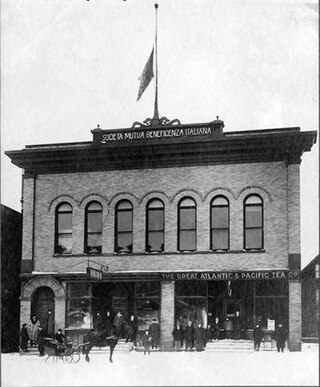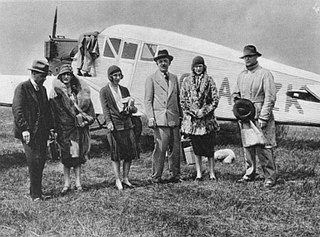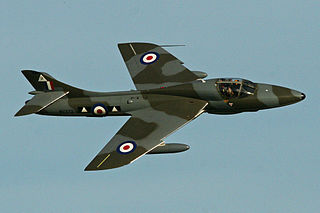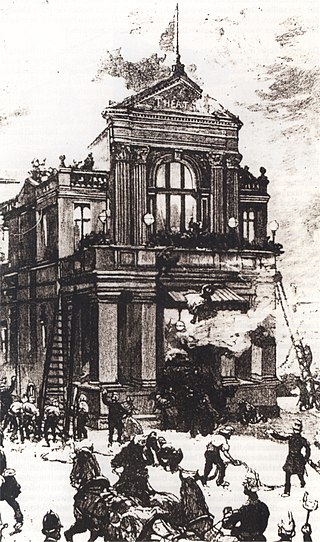Related Research Articles
Inquests in England and Wales are held into sudden or unexplained deaths and also into the circumstances of and discovery of a certain class of valuable artefacts known as "treasure trove". In England and Wales, inquests are the responsibility of a coroner, who operates under the jurisdiction of the Coroners and Justice Act 2009. In some circumstances where an inquest cannot view or hear all the evidence, it may be suspended and a public inquiry held with the consent of the Home Secretary.

The PS Lady Elgin was a wooden-hulled sidewheel steamship that sank in Lake Michigan off the fledgling town of Port Clinton, Illinois, whose geography is now divided between Highland Park and Highwood, Illinois, after she was rammed in a gale by the schooner Augusta in the early hours of September 8, 1860. The passenger manifest was lost with the collision, but the sinking of Lady Elgin resulted in the loss of about 300 lives in what was called "one of the greatest marine horrors on record". Four years after the disaster, a new rule required sailing vessels to carry running lights. The Lady Elgin disaster remains the greatest loss of life on open water in the history of the Great Lakes.

The Italian Hall disaster was a tragedy that occurred on Wednesday, December 24, 1913, in Calumet, Michigan, United States. Seventy-three people – mostly striking mine workers and their families – were crushed to death in a stampede when someone falsely shouted "fire" at a crowded Christmas party.

The Bath School disaster, also known as the Bath School massacre, was a series of violent attacks perpetrated by Andrew Kehoe upon the Bath Consolidated School in Bath Charter Township, Michigan, United States, on May 18, 1927. The attacks killed 38 children and 6 adults, and injured at least 58 other people. Prior to the explosions at the school, Kehoe had murdered his wife, Nellie Price Kehoe, and firebombed his farm. Arriving at the site of the school explosion, Kehoe died when he set off explosives concealed in his truck.
The open verdict is an option open to a coroner's jury at an inquest in the legal system of England and Wales. The verdict means the jury confirms the death is suspicious, but is unable to reach any other verdicts open to them. Mortality studies consider it likely that the majority of open verdicts are recorded in cases of suicide where the intent of the deceased could not be proved, although the verdict is recorded in many other circumstances.
An inquest is a judicial inquiry in common law jurisdictions, particularly one held to determine the cause of a person's death. Conducted by a judge, jury, or government official, an inquest may or may not require an autopsy carried out by a coroner or medical examiner. Generally, inquests are conducted only when deaths are sudden or unexplained. An inquest may be called at the behest of a coroner, judge, prosecutor, or, in some jurisdictions, upon a formal request from the public. A coroner's jury may be convened to assist in this type of proceeding. Inquest can also mean such a jury and the result of such an investigation. In general usage, inquest is also used to mean any investigation or inquiry.

The Boys in Red accident occurred on January 12, 2008, just outside the city of Bathurst, New Brunswick, Canada. A semi-trailer truck and a van carrying the basketball team from Bathurst High School collided, which killed seven students, the wife of the coach, and injured four other occupants in the van. It was the deadliest transportation accident in New Brunswick since 1989, when a logging truck tipped onto a hayride in Cormier Village, killing 13. It was the deadliest bus accident involving a sports team in Canada until the Humboldt Broncos bus crash in April 2018.

The Brooklyn Theatre fire was a catastrophic theatre fire that broke out on the evening of December 5, 1876, in the city of Brooklyn. The fire took place at the Brooklyn Theatre, near the corner of Washington and Johnson streets, with over 1,000 guests attending. The conflagration killed at least 278 individuals, with some accounts reporting more than 300 dead. 103 unidentified victims were interred in a common grave at Green-Wood Cemetery, marked by an obelisk, while more than two dozen identified victims were interred individually in separate sections at the Cemetery of the Evergreens in Brooklyn.

The Club Cinq-Sept fire was a major blaze at a nightclub just outside Saint-Laurent-du-Pont, Isère, France, on Sunday, 1 November 1970. The fire claimed the lives of 146 people, almost all of whom were aged between 17 and 30. The scale of the disaster shocked the country. Subsequent official enquiries revealed a catalogue of shortcomings, oversights and evasions with regard to fire safety at both local and département level. Criminal charges were brought against a number of people; some received suspended jail sentences.

The Avondale Mine disaster was a massive fire at the Avondale Colliery near Plymouth Township, Pennsylvania, on September 6, 1869. It caused the death of 110 workers. It started when the wooden lining of the mine shaft caught fire and ignited the coal breaker built directly overhead. The shaft was the only entrance and exit to the mine, and the fire trapped and suffocated 108 of the workers. It was the greatest mine disaster to that point in American history.

The Ninth Avenue derailment, on the Ninth Avenue Elevated in Manhattan on September 11, 1905, was the worst accident on the New York City elevated railways, resulting in 13 deaths and 48 serious injuries.

The Meopham Air Disaster occurred on 21 July 1930 when a Junkers F.13ge flying from Le Touquet to Croydon with two crew and four passengers crashed near Meopham, Kent with the loss of all on board. The report of the inquiry into the accident was made public, the first time in the United Kingdom that an accident report was published.

The 1923 Daimler Airway de Havilland DH.34 crash occurred on 14 September 1923 when a de Havilland DH.34 of Daimler Airway operating a scheduled domestic passenger flight from Croydon to Manchester crashed at Ivinghoe, Buckinghamshire, England, killing all five people on board.
The Top Storey Club was a nightclub in Bolton, Greater Manchester, England. It achieved notoriety for a fire which occurred on 1 May 1961 in which 19 people perished.

The Coroner of New York City issued death certificates and performed autopsies and inquests for New York County, New York, for all homicides, suicides and accidental deaths and any suspicious deaths.

On 22 August 2015, a former military aircraft crashed onto a main road during an aerial display at the Shoreham Airshow at Shoreham Airport, England, killing 11 people and injuring 16 others. It was the deadliest air show accident in the United Kingdom since the 1952 Farnborough Airshow crash, which had killed 31 people.
The Hotel Royal fire occurred on February 7, 1892, at the Hotel Royal in New York City, killing 28 people. The fire began in the hotel's elevator shaft, where the night engineer was performing maintenance work by the light of a candle. The candle's flame either ignited a gas leak in the shaft, or it caught a dry tinder such as dust and was then flamed by the strong winds blowing through the shaft. A coroner's jury assigned no fault for the fire and made no recommendations for safety improvements; however, legislation was introduced in the New York State Assembly that sought to tighten the building code in light of the fire as well as the 1891 Park Place disaster.
The Granite Mill fire occurred on September 19, 1874 at the Granite Mills in Fall River, Massachusetts. The blaze killed 23 employees, most of them children.

On 5 September 1887, a fire broke out in the backstage area of the Theatre Royal in Exeter, England, during the production of The Romany Rye. The fire caused panic throughout the theatre, with 186 people dying from a combination of the direct effects of smoke and flame, crushing and trampling, and trauma injuries from falling or jumping from the roof and balconies.
References
- ↑ "THE CATASTROPHE.: ACCIDENT IN THE NINTH WARD SCHOOL. CORNER'S INVESTIGATION. VISIT OF THE JURY TO THE BUILDING, FURTHER PARTICULARS. BURIAL OF THE DEAD. SOLEMN CEREMONIES. INCIDENTS ATTENDING THE DISASTER". New-York Daily Times . November 24, 1851. p. 3.
- 1 2 "THE NINTH WARD CALAMITY.: CORONERS'S INQUEST". New-York Daily Times . November 22, 1851. p. 2.
- ↑ "The Ninth Ward Accident--The Inquest and the Firemen". New-York Daily Times . December 2, 1851.
- ↑ Friedman, Donald (September 5, 2018). "The engineer as expert: early structural forensic reports in the United". Building Knowledge, Constructing Histories. 6th International Congress on Construction History (July 9-13, 2018). Brussels: CRC Press. pp. 59–66. ISBN 978-0-429-01362-1.